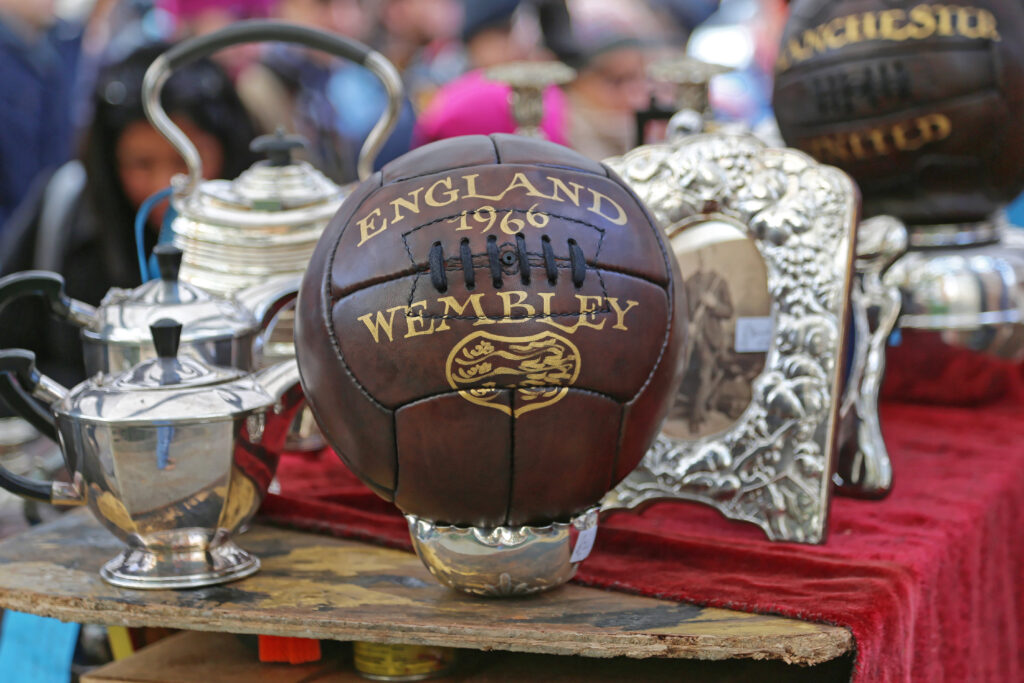Graphic design rules (and how England football kit designers broke them)
While the world of graphic design might encourage professionals to test boundaries and embrace their creative licence, there are several sacred unwritten rules that should be followed. Yet every so often, a design comes along that dares to break the rules in a bold and unexpected way. Although these rule-breaking designs can sometimes attract the right kind of attention, there have been scenarios in which that’s not always the case – and instead has led to confused audiences and negative perception.
Here, the creatives at Oxygen Graphics take a look at some of the most high-profile graphic design flops – some of which cost a brand more than just their reputation.
Nike sparks fury after changing St George’s Cross on England kit
Earlier this year – in preparation for the Euros 2024 – Nike unveiled a fresh England kit, which saw them change the cross of St George, with its horizontal bar now a combination of blues and purples rather than the red of the original flag.

London, United Kingdom – November 23, 2013: Leather Ball England 1966 Wembley at Portobello Road Market in London, UK.
While Nike insisted it was a ‘playful update’ inspired by the training gear worn by England’s 1966 winning team, the move has caused outrage amongst football fans across the nation – including Prime Minister Rishi Sunak – all of whom argued that the national flag should never have been altered.
Nike hoped that by changing the flag colour it would ‘unite and inspire’ but sadly, it seems the re-design had the opposite effect. What Nike did instead, was de-face the very thing that unites a nation of football fans: the St George’s Cross.
As Labour MP Emily Thornberry said, weighing into the great debate, ‘you wouldn’t expect Nike to look at the Welsh flag and change the dragon to a pussycat.’ So why mess with the St George’s Cross?
With threats from fans to boycott the design by not buying the £84.99 shirt, we anticipate Nike’s choice to meddle with a symbol which means so much to so many, might just have a huge impact on sales this summer.
Brand familiarity underestimated by family favourite Tropicana
Tropicana, a well-established brand known for its iconic orange juice packaging featuring a straw stuck to an orange, decided to undergo a major redesign in 2009. In an attempt to modernise its image, the new packaging featured a minimalist design with a clean white background, a simple logo and a large image of a glass of orange juice.
Waving goodbye to the orange with a straw ignited an immediate backlash, with shoppers voicing their disappointment and confusion. Many criticised the new design as generic, suggesting the brand’s personality had been lost – with consumers arguing that the removal of the familiar orange with the straw made it difficult for them to quickly identify the drink.
It didn’t take long for PepsiCo, Tropicana’s parent company, to respond to the overwhelmingly negative feedback and reverse the decision. The original packaging design was reinstated just two months after the rebrand was launched.
A firm reminder that brand recognition in such a competitive marketplace should never be underestimated.
$10 million re-brand costs HSBC more than they bargained for
The ‘HSBC – Assume Nothing’ campaign was a marketing initiative launched in 2009. Featuring a series of print, television and digital advertisements, it showcased HSBC’s commitment to embracing cultural differences and providing personalised financial solutions to its customers worldwide. And, while the campaign aimed to challenge assumptions and celebrate cultural diversity, it faced a huge backlash and ended up costing the global banking organisation a lot of money to rebrand their rebrand.
Critics of the campaign raised their concerns about cultural sensitivity, arguing that the campaign’s attempts to address cultural differences were superficial and even potentially offensive. The imagery – while eye-catching – was seen as stereotyping cultures rather than genuinely embracing diversity.
Some argued there was a lack of clarity around the messaging, with the tagline ‘assume nothing’ deemed ambiguous. Without clear context or explanation, it wasn’t necessarily clear what HSBC was asking people ‘not to assume’, leading to both confusionand in some cases, misinterpretation of the campaign’s intentions.
Additionally, the campaign arguably disconnected from HSBC’s traditional identity: a brand built on trust, stability and professionalism.
While it’s not clear how much HSBC spent to fix the problem, the campaign itself cost $10 million (£6.8 million) – an eye-watering amount of cash to spend on a failed re-brand.
GAP disconnects with loyal consumers
One of the shortest-lived rebrands in the history of rebrands has to be GAP. Rewind to 2010, when the iconic clothing retailer unveiled a new logo on its website, transforming the all-caps iconic ‘GAP’ – which had been used for more than 20 years – to a simple, lowercase ‘Gap’. The change was intended to modernise the brand and reflect its evolution while maintaining its classic identity.
However, the reaction to the new logo was anything but positive. Consumers and design experts criticised the design, calling it ‘bland’, ‘uninspired’ and ‘lacking the distinctive character of the original logo’. It simply no longer resonated with the brand’s target audience.
The backlash was so huge that GAP announced it would revert to its original logo within less than a week, costing the brand significant time and resources. A reminder to all designers that what might seem small like a simple change of typography can have the biggest impact in loyal audience members.
Why sticking to the rules can sometimes be the safest option
It’s clear that breaking graphic design rules carries inherent risks, and when it doesn’t work, the consequences can range from confusion and loss of legibility to negative perception and ineffective communication.
Brands need to approach rule-breaking thoughtfully, considering the context, objectives and most importantly, potential impact on the audience. If you’re thinking about re-branding your business then get in touch with the experts at Oxygen Graphics. Whether you’re looking to push the boundaries or stick to the rules, it’s always best to work with a team of professionals. Let’s talk.
Header image source: PA Images
In need of marketing support? Get in contact with a member of our team today to see how Oxygen Graphics can help you! T : 01788 561 991 E : info@oxygengraphics.co.uk

